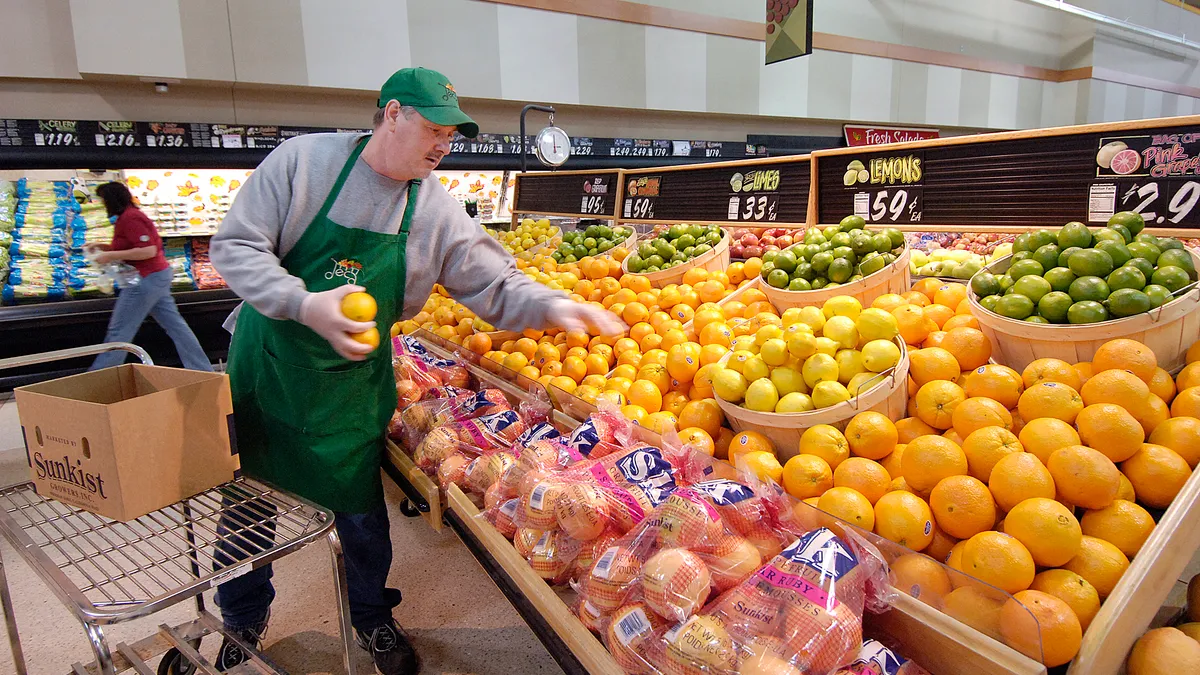Mark Hardy is CEO of InContext Solutions, the leading provider of cloud-based virtual reality solutions for retailers and brands.
Ever since online grocery outlets like Amazon, Peapod and Instacart stepped onto the scene, there’s been no shortage of speculation about what’s in store for the future of grocery. Many see Amazon’s recent purchase of Whole Foods as foreshadowing that the industry will soon go completely digital. But the truth is, the acquisition signals quite the opposite.
With new investments and emerging technologies sparking a wave of innovation across the industry, grocery is evolving, not disappearing. In fact, the in-store shopping experience itself is proving to be irreplaceable, as 85% of shoppers say they prefer to buy goods in person.
Here are five reasons why brick-and-mortar grocery stores are here to stay:
-
Amazon believes in grocery
If the biggest e-commerce giant in the world just dropped $13.7 billion on a grocery chain, it means something. While many motives lie behind Amazon’s Whole Foods purchase, one big reason for the deal is that the company knows people still want to experience the instant gratification a shopping trip provides. These consumers are using online as a fulfillment channel, but still buying the bulk of their grocery items in store; today’s shoppers want both the convenience of online shopping and the in-store experience. This is why Amazon’s “clicks and bricks” approach makes sense, and why grocery is a great long-term investment — not only for Amazon — but also for other innovators in the industry. In fact, last year the industry’s average stock score grew 6.8 points, and shows no signs of slowing any time soon.
-
Grocery is a destination of emerging technologies
Virtual reality, artificial intelligence and automation are just a few technologies making their way into the industry. Take Kroger, for instance. The popular grocery chain is incorporating these technologies into its physical store shelves, where beacon sensors help shoppers locate products on their shopping list as they walk through the store. Connected to the Kroger mobile app, these sensors show customers a virtual map of where to find the products they need. Kroger, along with many other major grocery chains, is starting to test out the “scan, bag, and go” option, which allows customers to scan items as they shop and pay on their phone as they walk out the door — cutting time typically wasted at checkout. -
Cross-industry collaboration is on the rise
Mark HardyInContext SolutionsAlong with new grocery technologies comes an increase in collaboration between CPG manufacturers and retailers. For instance, ShopperMX, a virtual reality solutions platform for retail, is allowing brand and retail teams to work together to make data-driven decisions on new concepts, such as shelf arrangements, signage and store layouts. And a quick look at the number of active virtual reality users — forecasted to reach 171 million by 2018 — means it’s no surprise why many grocers are investing accordingly.
This VR technology lets forward-thinking retailers and brands build out new concepts in virtual, and from there, test which concepts will resonate most with consumers. Whether learning if a product on the bottom or top shelf will have a higher sale rate, or if diagonal-facing aisles are considered more “shoppable” than those arranged vertically, virtual reality lets retailers and brands work together to build the best in-store concepts before taking to market — saving time, money and resources.
-
Click and collect is gaining popularity
Shoppers want the ease of ordering groceries online but the convenience of picking them up on their own schedule, not to mention eliminating shipping fees — hence the booming growth of the “click-and-collect” model. Click-and-collect allows customers to order groceries online and then have them gathered and prepared by a store employee for easy pickup.
Forty-nine percent of Americans tried click-and-collect for the first time last year, and the number of repeat customers is growing. Plus, to the benefit of retailers, 70% of click-and-collect users note that they purchase additional items once they’re at the store. The number of grocery stores offering click-and-collect grew from 15% in 2015 to 23% in 2016, with industry leaders like Walmart and Kroger recently jumping on board.
-
The in-store experience is irreplacable
Simply put, there is no replacing the traditional grocery shopping experience. People want to see the products they are buying, compare them to other options and have the ability to easily return any products they don’t want. Fify-nine percent of complaints against online grocery services revolve around receiving undesirable or mishandled produce, an unfortunate occurrence that seems to happen too often with deliveries.To capitalize on this, a majority of grocery stores are shifting their focus to improving the entire customer in-store shopping experience — meaning more personalized selections, friendlier staff members and more extravagant and entertaining displays.
While the grocery industry is indeed changing, it’s nowhere close to disappearing. From emerging technologies like virtual reality and artificial intelligence to the irreplaceable experience in-store shopping provides, brick-and-mortar grocery is proving to be stronger than ever before.









